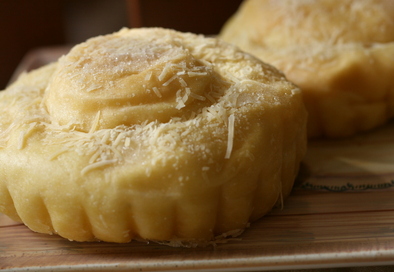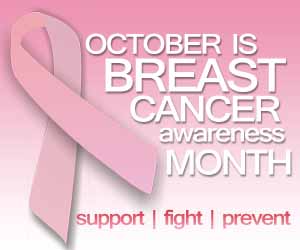
Ensaïmada (Catalan pronunciation: [ənsə.iˈmaðə], pl. ensaïmades; Spanish: ensaimada) is a pastry product from Majorca, Spain. It is a common cuisine eaten in most former Spanish territories in Latin America and the Philippines, which has been continuously made and eaten for a very long time.
The first written references to the Majorcan ensaïmada date back to the 17th century. At that time, although wheat flour was mainly used for making bread, there is evidence that this typical pastry product was made for festivals and celebrations.
The ensaïmada de Mallorca is made with strong flour, water, sugar, eggs, mother dough and a kind of reduced pork lard named saïm. The handmade character of the product makes it difficult to give an exact formula, so scales have been established defining the proportion of each ingredient, giving rise to an excellent quality traditional product. The name comes from the Catalan word saïm (pronounced: [səˈim]), which means 'pork lard' (from Latin sagimen, meaning 'fat').
In Ibiza there is a sweet called greixonera made with ensaimada pieces left over from the day before.
The first written references to the Majorcan ensaïmada date back to the 17th century. At that time, although wheat flour was mainly used for making bread, there is evidence that this typical pastry product was made for festivals and celebrations.
The ensaïmada de Mallorca is made with strong flour, water, sugar, eggs, mother dough and a kind of reduced pork lard named saïm. The handmade character of the product makes it difficult to give an exact formula, so scales have been established defining the proportion of each ingredient, giving rise to an excellent quality traditional product. The name comes from the Catalan word saïm (pronounced: [səˈim]), which means 'pork lard' (from Latin sagimen, meaning 'fat').
In Ibiza there is a sweet called greixonera made with ensaimada pieces left over from the day before.
Among the variants of ensaimada the most common are:
In the Philippines, a Spanish colony for over 300 years; the Majorcan ensaïmada (commonly spelled ensaymada in Tagalog and Cebuano) has evolved over the centuries and is perhaps one the most common delicacies in that country, the ensaymada is a brioche made with butter instead of lard, and topped with grated cheese (usually aged Edam, known locally as keso de bola) and sugar. Upscale versions of ensaymada are also topped with butter cream and sugar. It is extremely popular throughout the islands, especially during the Christmas season, when it is often, although not always, eaten with hot chocolate (Antonio Pueo is most popular) and strawberries.
In Puerto Rico, another Spanish colony until 1898, the ensaïmada is called mallorca and is traditionally eaten for breakfast or as an afternoon snack.
- Llisa (literally plain) with no extra ingredient.
- Cabell d'àngel (literally angel's hair), the stringy orange strands found inside pumpkins are cooked with sugar to make a sweet filling that is rolled inside the dough.
- Tallades (literally sliced) covered with Sobrasada and pumpkin, obtaining a bittersweet taste. It is typical of Lent days.
- Filled with sweet cream, chocolate or turrón paste.
- Covered with apricot.
In the Philippines, a Spanish colony for over 300 years; the Majorcan ensaïmada (commonly spelled ensaymada in Tagalog and Cebuano) has evolved over the centuries and is perhaps one the most common delicacies in that country, the ensaymada is a brioche made with butter instead of lard, and topped with grated cheese (usually aged Edam, known locally as keso de bola) and sugar. Upscale versions of ensaymada are also topped with butter cream and sugar. It is extremely popular throughout the islands, especially during the Christmas season, when it is often, although not always, eaten with hot chocolate (Antonio Pueo is most popular) and strawberries.
In Puerto Rico, another Spanish colony until 1898, the ensaïmada is called mallorca and is traditionally eaten for breakfast or as an afternoon snack.
Ingredients
- 5 cups all-purpose flour
- ¾ cup butter, melted
- ¾ cup white sugar
- 1 tsp salt
- 1 cup grated cheddar cheese
- 3 pieces raw eggs
- 1 pouch rapid rise yeast (about 2 ¼ tsp)
- 1 cup fresh milk, warm
Procedure
1. Combine warm milk, yeast, and ½ cup sugar and stir until yeast and sugar dissolves in milk. Set aside to let yeast activate (approximately 10 minutes)
2. In a mixing bowl, combine all the dry ingredients starting from the flour, sugar, and salt then mix thoroughly.
3. Add the eggs, 1/2 cup butter, and activated yeast mixture (these are the ingredients that we combined in number 1) to the mixed dry ingredients. Mix thoroughly until all ingredients are evenly distributed and a dough is formed.
4. Knead the dough until texture becomes fine.
5. Put the dough back on the mixing bowl and cover the top with cloth. Allow the dough to rise for 2 hours.
6. Put the dough on a flat surface and flatten. Punch the dough lightly to release the air inside.
7. Using a dough slicer, divide the dough into four pieces.
8. Roll each piece until shape becomes cylindrical.
9. Cut the cylindrical dough into individual serving pieces (1 serving piece should weigh at least 80 grams).
10. Put the sliced individual serving piece in a flat surface and flatten using a rolling pin.
11. Combine ¼ cup melted butter with ¼ cup white sugar. Using a brush, paint the mixture on the flattened dough. Make sure to paint only the center part of the flat dough.
12. Sprinkle some cheese over the painted area then seal the dough by folding opposite directions and rolling it until a long cylindrical shape is formed (about 14 inches in length).
13. Start forming the spiral Ensaymada shape by crossing the two opposite ends of the dough. The first end should be placed under dough while the other end should be inserted in the middle. (see video for better comprehension)
14. Place the dough in a baking tray with wax paper and cover with cloth. Set aside to rise for another 45 minutes
15. Pre-heat the oven at 350 degrees Fahrenheit for 10 minutes. Remove cloth on top of the tray and bake the dough for 15 minutes at 350 degrees Fahrenheit.
16. Remove the baked Ensaymada from the oven. Using the remaining melted butter and sugar mixture, paint the top of the baked ensaymada and sprinkle additional cheese.
17. Serve hot. Share and Enjoy!
Sources:
http://dessertcomesfirst.com/archives/2690/
http://panlasangpinoy.com/2009/08/30/filipino-pastry-bread-baking-ensemada-ensaimada-ensaymada-recipe/
http://en.wikipedia.org/wiki/Ensaimada
2. In a mixing bowl, combine all the dry ingredients starting from the flour, sugar, and salt then mix thoroughly.
3. Add the eggs, 1/2 cup butter, and activated yeast mixture (these are the ingredients that we combined in number 1) to the mixed dry ingredients. Mix thoroughly until all ingredients are evenly distributed and a dough is formed.
4. Knead the dough until texture becomes fine.
5. Put the dough back on the mixing bowl and cover the top with cloth. Allow the dough to rise for 2 hours.
6. Put the dough on a flat surface and flatten. Punch the dough lightly to release the air inside.
7. Using a dough slicer, divide the dough into four pieces.
8. Roll each piece until shape becomes cylindrical.
9. Cut the cylindrical dough into individual serving pieces (1 serving piece should weigh at least 80 grams).
10. Put the sliced individual serving piece in a flat surface and flatten using a rolling pin.
11. Combine ¼ cup melted butter with ¼ cup white sugar. Using a brush, paint the mixture on the flattened dough. Make sure to paint only the center part of the flat dough.
12. Sprinkle some cheese over the painted area then seal the dough by folding opposite directions and rolling it until a long cylindrical shape is formed (about 14 inches in length).
13. Start forming the spiral Ensaymada shape by crossing the two opposite ends of the dough. The first end should be placed under dough while the other end should be inserted in the middle. (see video for better comprehension)
14. Place the dough in a baking tray with wax paper and cover with cloth. Set aside to rise for another 45 minutes
15. Pre-heat the oven at 350 degrees Fahrenheit for 10 minutes. Remove cloth on top of the tray and bake the dough for 15 minutes at 350 degrees Fahrenheit.
16. Remove the baked Ensaymada from the oven. Using the remaining melted butter and sugar mixture, paint the top of the baked ensaymada and sprinkle additional cheese.
17. Serve hot. Share and Enjoy!
Sources:
http://dessertcomesfirst.com/archives/2690/
http://panlasangpinoy.com/2009/08/30/filipino-pastry-bread-baking-ensemada-ensaimada-ensaymada-recipe/
http://en.wikipedia.org/wiki/Ensaimada



